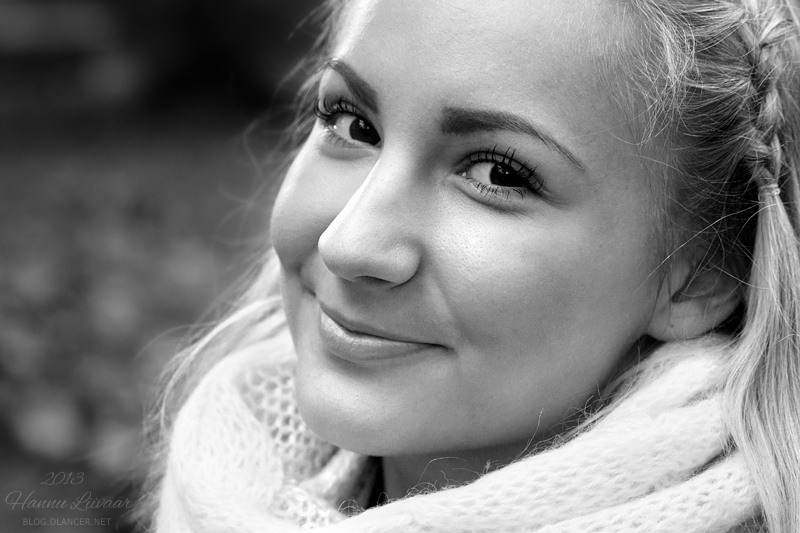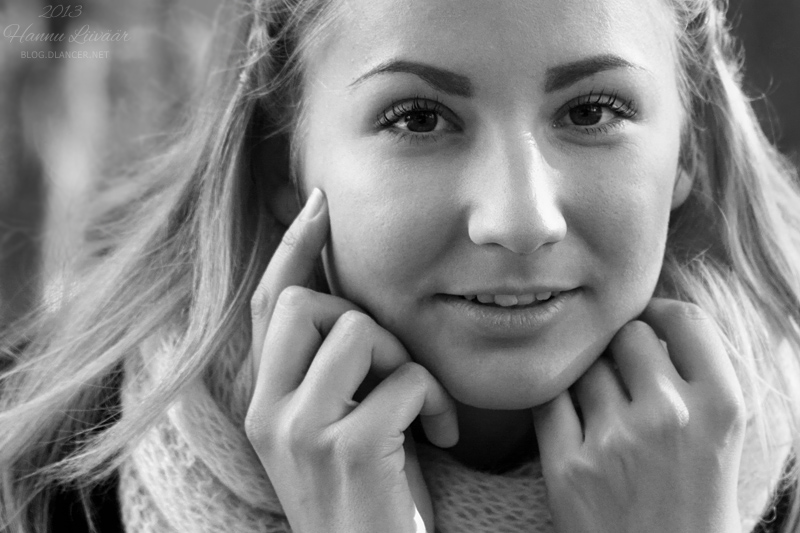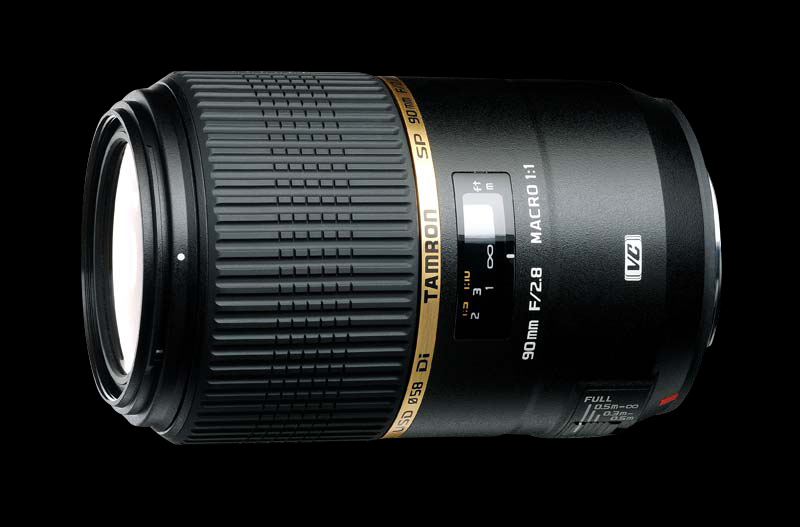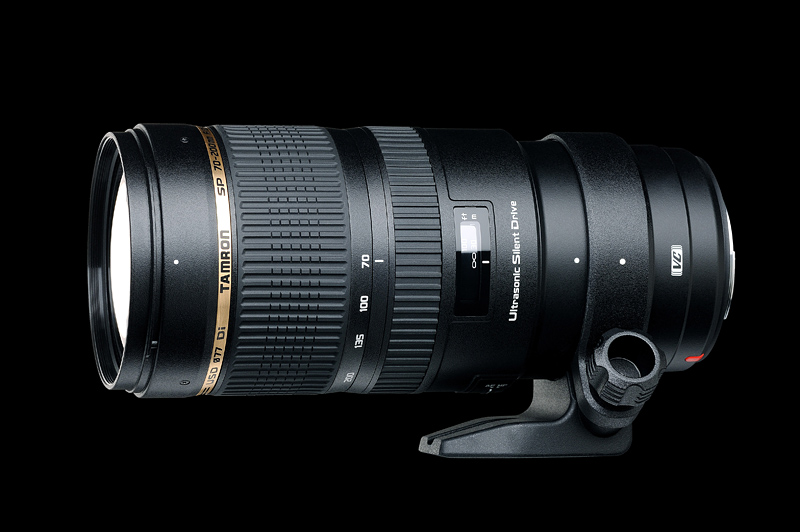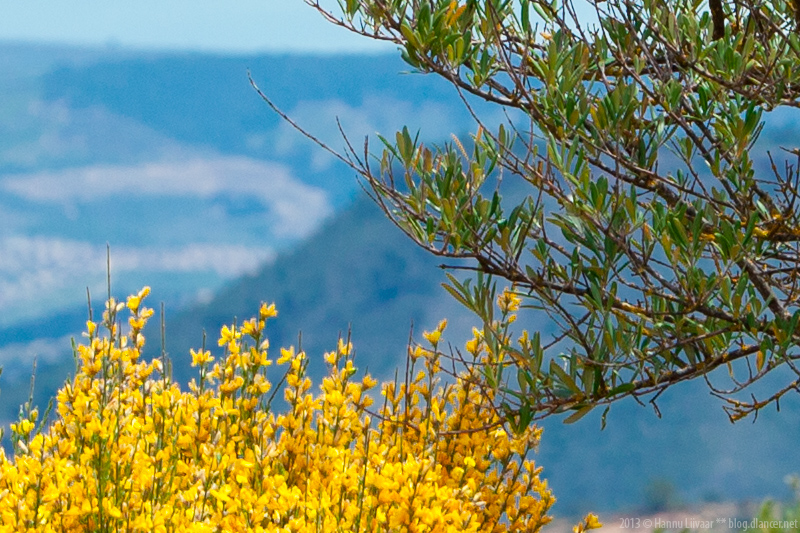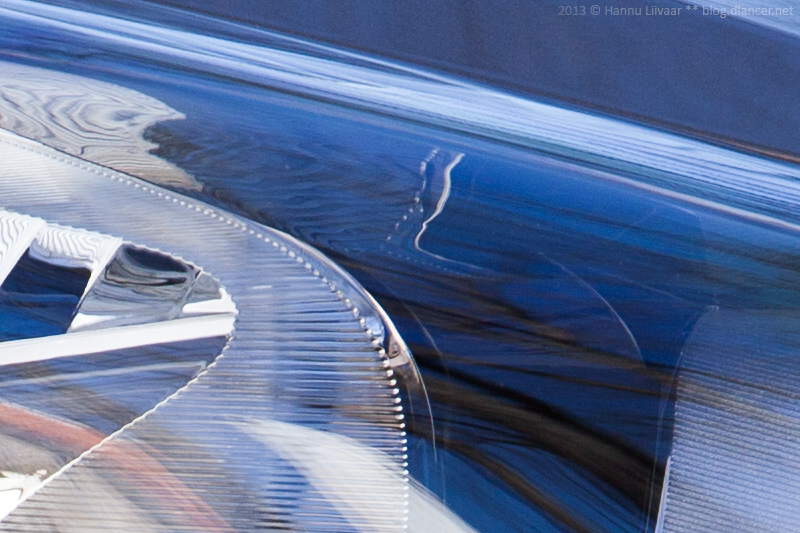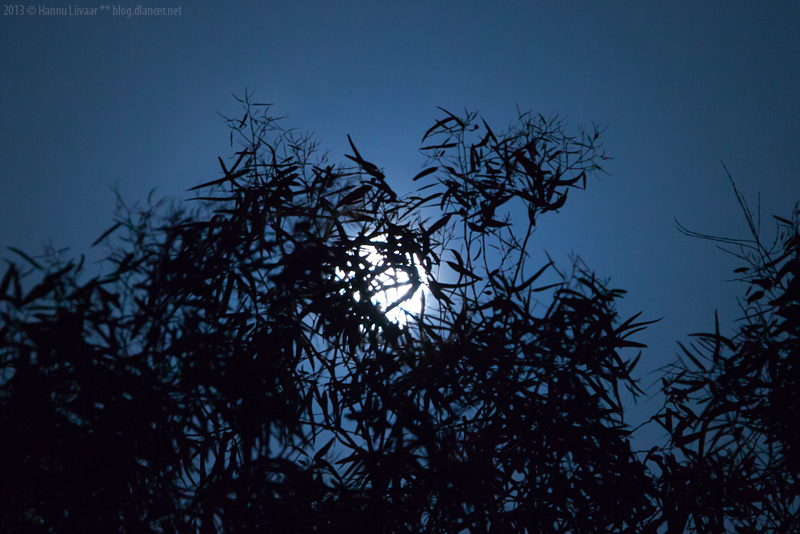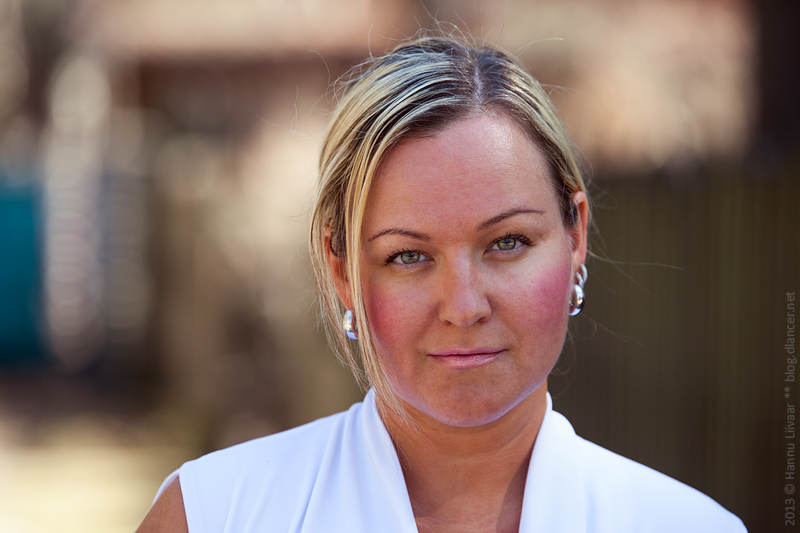Tuesday, November 05, 2013
Nikon Df
Nikon announces model DF today - the long-awaited retro-style camera for long-time Nikon fans. The unit features a 16mp FX (full frame) sensor from its current flagship D4, and accepts wide selection on F-mount lenses - even the oldest ai(s) ones. Thumbs up Nikon - in photography, the new DF could easily be considered as a product of the year.
Monday, October 28, 2013
Portraits V
Another day with the capricious light conditions late September, I was able to meet M, a real superstar, for some portrait photos. And what a splendid shoot it was, as soon as she came, all the clouds were gone. With this easy-going and ever-shining model, a productive time it was; again, it was not easy to pick up photos qualifying as "the best ones". Looking forward to the next shoots!
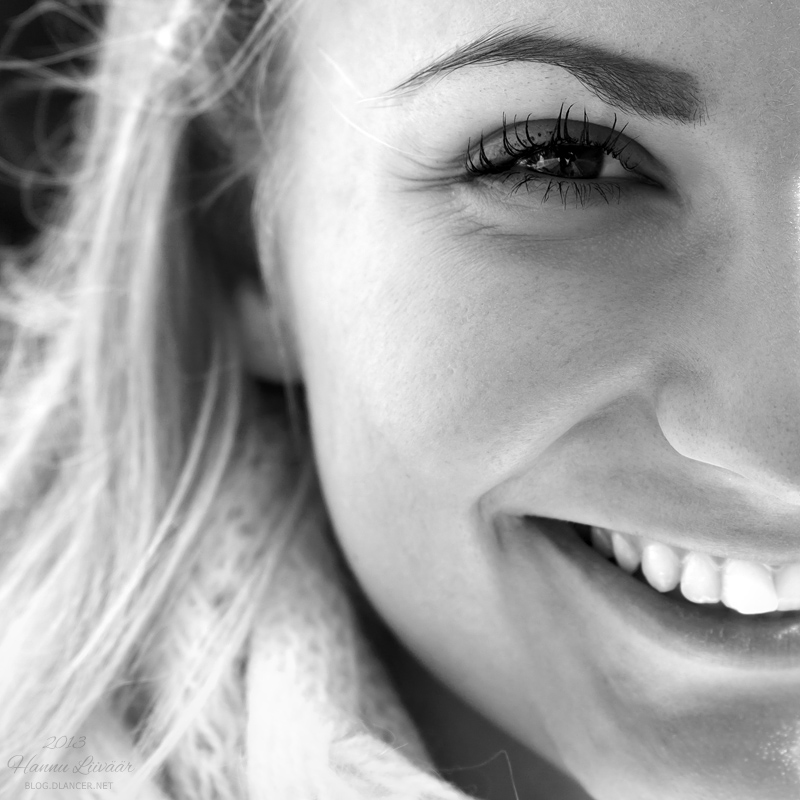
Portraits IV
Another (almost) spontaneous trip out to take a couple of photographs, I was lucky to meet R, and another couple of hours just went by walking around and taking photographs and facing the autumn weather. Despite a couple of light showers it all went well and the light was just superb all day so we again made our best to capture it all. Despite some technical problems (focus issues, yay, a nightmare) I was very pleased with the results; R had been doing some modeling work before, so a smooth ride it was!
Portraits III
I sometimes face tough time finding the right photographs for the blog, especially when every shot just seems so good and unique. This was the story this time as well with K, just simply stunning person to take portrait photographs of and what a creative person to play with different settings for portrait photography; I'm almost out of words how happy I was working with such a great model. And, she traveled a looong distance just for this shoot, wow! So fingers crossed she liked the results.
Portraits II
It was a superb experience to work together with K. - a spontaneous trip out of town for a portrait shoot was rewarded with excellent cooperation and experienced model full of energy and sun! Some luck we also had with the weather with the best warm summer breeze and mild sunlight. Tons of experience and good emotions - thank you very much K!
Portraits I
There are some great places online where photographers and models can meet and set up portrait sessions. It often works in a way the photographer wants to shoot to become better at portrait photography, while the model appreciated the new fresh photographs. One of these sites is Model Mayhem (I believe its database is the largest as of today, with more than 800k models registed; however Model Management is picking up, and there are additional ones (i.e. Models Meet Photographers) if you care to do some google work). So I was also able to meet some great models and since I feel I need to improve my portrait photography skills, here come a couple of shots of each shoot.
It was a superb cooperation with E., thanks for the patience and hard work with finding the best ways for the great portraits! Truly emotional, sometimes serious, but always creative and easy to work with, it was a great experience of taking some headshots.
It was a superb cooperation with E., thanks for the patience and hard work with finding the best ways for the great portraits! Truly emotional, sometimes serious, but always creative and easy to work with, it was a great experience of taking some headshots.
Afterword to summer
A couple of shots from spring/summer. As the time goes on the pickier I'm with the photos so it was really hard to make a selection which on to take, which one to leave. I was finally also able to shoot some portraits, some shots to follow at the following posts.


Saturday, October 05, 2013
Tamron 90mm VC review
Tamron SP 90mm F/2.8 Macro 1:1 VC USD review.
Thank you for Nordic Digital for providing the lens for testing purposes.
Lizard. ISO 200, 1/640s, F/7.1
Tamron 90mm 1:1 Macro F/2.8 VC USD is the latest addition of macro lens selection of Tamron. SP stands for Super Performance, the recent 24-70/2.8 VC USD and the 70-200/2.8 VC USD are from the same series and this can easily be told considering the high build quality of all these lenses deliver. The Tamron 90mm Macro lens features new ring-type focus (USD) and vibration control (VC) compared with its predecessor Tamron 90mm F/2.8 Macro 1:1 Di. Let's take a look what the lens is capable for and what are the performance impressions shooting under different circumstances. Technical information (ISO, shutter speed, aperture) is written below each image (VC is off unless stated otherwise).
Tinkler. ISO 400, 1/320s, F/4.5
The lens is full frame one - 36x24mm - so you can easily use it with both with your FX (full frame) or DX (aps-c size DSLR) camera. I picked Canon 60D this time (18mpix APS-C) to see how well the lens renders the image to the (relatively) small pixels of the Canon's excellent DX DSLR camera (the pixels are, for example more than 2x smaller physically, than the ones at Canon 5D Mark II (21mpix at 36x24mm sensor).
Fishing net. ISO 100, 1/160s, F/3.2 (The pink/red area at the background is actually another fishing net - so considering this you can evaluate the bokeh).
 Eyelash. ISO 200, 1/400s, F/5.0
Eyelash. ISO 200, 1/400s, F/5.0
The housing of the lens is plastic, the build quality feels solid, the rubber-coated focusing ring feels smooth and comfortable with excellent grip to fingers. No zoom ring this time as the focal length is fixed. The unit feels lightweight with the weight measuring 550g (1.2lb) only. Bayonet mount is metallic so no cheap solution here.
Thank you for Nordic Digital for providing the lens for testing purposes.
Lizard. ISO 200, 1/640s, F/7.1
Tamron 90mm 1:1 Macro F/2.8 VC USD is the latest addition of macro lens selection of Tamron. SP stands for Super Performance, the recent 24-70/2.8 VC USD and the 70-200/2.8 VC USD are from the same series and this can easily be told considering the high build quality of all these lenses deliver. The Tamron 90mm Macro lens features new ring-type focus (USD) and vibration control (VC) compared with its predecessor Tamron 90mm F/2.8 Macro 1:1 Di. Let's take a look what the lens is capable for and what are the performance impressions shooting under different circumstances. Technical information (ISO, shutter speed, aperture) is written below each image (VC is off unless stated otherwise).
Tinkler. ISO 400, 1/320s, F/4.5
The lens is full frame one - 36x24mm - so you can easily use it with both with your FX (full frame) or DX (aps-c size DSLR) camera. I picked Canon 60D this time (18mpix APS-C) to see how well the lens renders the image to the (relatively) small pixels of the Canon's excellent DX DSLR camera (the pixels are, for example more than 2x smaller physically, than the ones at Canon 5D Mark II (21mpix at 36x24mm sensor).
Fishing net. ISO 100, 1/160s, F/3.2 (The pink/red area at the background is actually another fishing net - so considering this you can evaluate the bokeh).
 Eyelash. ISO 200, 1/400s, F/5.0
Eyelash. ISO 200, 1/400s, F/5.0The housing of the lens is plastic, the build quality feels solid, the rubber-coated focusing ring feels smooth and comfortable with excellent grip to fingers. No zoom ring this time as the focal length is fixed. The unit feels lightweight with the weight measuring 550g (1.2lb) only. Bayonet mount is metallic so no cheap solution here.
Bug. ISO 320, 1/125s, F/4.5
Ceramics. ISO 400, 1/250s, F/4.0
You
can find 3 buttons at the lens, placed traditionally in a way you can
access it with your left hand easily: AF/MF button; VC on/off; finally,
the 3-stage focus limiter button (good job Tamron - really useful
feature since the autofocus has now option to make its job quicker at
certain working conditions). As usual to the USM-type autofocuses, the focus can be modified manually at any time.
Beetle. ISO 100, 1/80s, F/6.3
Macro
lens are well known for its excellent image quality. The predecessor
(Tamron 90mm Macro without VC/USD) was already well respected - how does
this new unit meet the expectations? So here I am finding myself
equipped with a couple of days of time, a nice Canon body with the lens
and a bunch of memory cards and spare batteries ready for extensive
shooting. It's summer time so the best time to capture some bugs and
flowers at northern hemisphere.
Towers. ISO 400, 1/250s, F/4.0
The
Macro 1:1 means you can capture "life size" image with the closest
focus of the lens. So if you focus your lens as close as possible at
full frame lens, you can capture a 36x24mm frame of your subject. This
size is perfect to accommodate every kind of bugs, butterflies, flowers
and other small objects we might find interesting to take a photograph
of.
Skin of a grass snake. ISO 400, 1/125s, F/5.6
The
image stabilizer works well. I find it especially useful when shooting
footage. Most of the situations I shoot stills I find the stabilizer
turned of (I find it often turned off at my other lens as well) however
you can be sure the VC saves you some great shots at modest light
conditions and I was able to shoot great portraits hand held with the
shutter speed as low as 1/30 and 1/20.
Soldier Ant. ISO 1250, 1/160s, F/5.6
Typically,
the image is somewhat soft with the aperture wide open, it get's better
at F/4, very good at f/5.6 and superb starting F/6.3(7.1) - sounds like
a general characteristics of a high quality F/2.8; however the image
quality and the way the lens renders certain image at given aperture
depends on several factors, so you may get surprisingly great results
with the lens wide open, or you may complain about the image quality
when the lens was stopped down. In general I was happy with the results
of Tamron's latest 90mm, and it delivered expected results per aperture.
Horsefly. ISO 200, 1/500s, F/7.1
I
also tried to use the lens as a "scanner" by photographing old film
negatives. With a special setup (film frames set at back-lit glass
surface) and a camera on tripod with the lens set somewhere between
F/7.1-9 I got really pleasant results. The lens always outperformed the
old film, I would say I even did not need all the 18 megapixels the 60D
has got. Focusing and DOF was not a problem once the camera was
carefully set up.
Film
"scan" - ISO 100, 0.4s (tripod), F/8 (The image above was originally
shot with a Pentax MZ-50 SLR camera and a Tamron 70-300mm F/4-5.6 LD
lens (Yay! It was Tamron again :-)) using Fujifilm Superia 200 back at
year 2002. I cannot tell about the exact shutter speed and aperture, but
as much as I can recall I would think the lens was set at 300mm with
the aperture being F/5.6 (there's some CA visible at contrasty areas).
Snout beetle. ISO 800, 1/40s, F/6.3, VC ON.
Caterpillar.
ISO 200, 1/200s, F/8 (This one is actually a real tiny one, so the
focus is near at its closest point - you can see this by really thin DOF
as well, despite the relatively small aperture - F/8).
A
couple of words about the (auto)focus. As typical to the macro lens the
focus shift is long which makes the focusing tricky both when you are
using manual or automatic focus. The AF limiter makes it easier at
certain conditions - when you are shooting, for example, portraits; or
when you are working with very close distances, so a real macro world.
Bulrush. ISO 200, 1/500s, F/5.6
Pattern Eye. ISO 400, 1/30s, F/5.6, VC ON.
Manual
focusing works really well. I often used live view with magnification
(Cheers to Canon, the "flip out + twist" LCD screen of 60D is really a
pleasure to use) to choose a part of the composition to focus on - and
had no problems to focus very, very precisely.
Automatic
focus works well as well. I tried to fool the focus with several
different (and not that easy) conditions, and of course, at some cases
the AF failed (i.e. focusing really thin object against intensive
light), but this would have failed with other cameras/lens as well, so
the result was as expected. For this test, I always used the center
cross-type focus point. At the end I was happy with the result - if you
are not going extreme, focus is precise at 99% of the time.
Flower. ISO 400, 1/25s, F/6.3, VC ON.
Do
I need to tell about the bokeh this time? :-) Yes, since it is very
very good. The bokeh itself is (again!) a complex topic, depending of
the build (straight/rounded) and number or
diaphragm
blades (the more rounded the aperture, the better the bokeh), but also
on the light conditions available at out of focus area. Also, how close
or far is the focus. The closer the focus, the better the chances to
have superb bokeh. Since the macro lens have the ability to focus really
close, we basically cannot talk about "bad" bokeh at all. For the
portraits, the bokeh was also very good.
Lizard II. ISO 400, 1/400s, F/7.1
So
what would be the final word for the lens overall? Tamron has made it
again! Sharp lens, quick/accurate focus, image stabilizer, excellent
build quality. Also relatively lightweight. I have no hesitation to
recommend the lens for serious macro shooters so be sure you try it out
for yourself when going out for the hunt of good macro photography.
Blue Nails. ISO 800, 1/50s, F/7.1
Tuesday, May 28, 2013
Tamron 70-200 VC Review
Tamron 70-200mm F/2.8 VC USD lens review.
Many thanks for Nordic Digital for providing the lens for testing.
A couple of weeks and a couple of thousand shots later, it is time to put together a brief about using this new hot lens. It is new because it was released a couple of months ago, and it is hot as it is directly competing with some of the best lens available at the market, the Canon's 70-200mm F/2.8 IS USM II, and Nikon's Nikkor 70-200mm F/2.8 VR II.
ISO200, 109mm, 1/500, F/7.1, VC off (100% details below)
The unit is familiar to anyone coming from its predecessor Tamron 70-200mm F/2.8 LD IF - changes for the new lens include USM-type focusing (USD - Ultra Silent Drive, image stabilization (VC - vibration control) and weather sealing (you can see a black rubber line when you mount the lens to your camera body) - so a nice update indeed. You can find two switches at the left side of the lens: VC (on/off), AF (on/off).
Five years ago when Tamron's original 70-200mm F/2.8 was released, it was titled with several awards because of its excellent optical quality; users were not that happy with (relatively) slow auto focus and plastic design though.
(200mm, ISO200, 1/1600, F/8, VC off)
The new model is also a plastic one, but looks and feels really well built. The all-metal tripod bracket (included) is solid and heavy. Lens hood (77mm mount) is also included - which can be useful if you don't like the halos when shooting directly against the sun; the hood also protects the external glass of the lens quite well.
The USD auto focus works really well - it is silent, fast, accurate. It is able to focus from its closest (approx 1.3m) to infinity in about 0,7s (no accurate measurements were made). Some of the users are complaining the Nikon/Canon lens are faster, but having used the lens side by side (Canon 70-200 USM), it is a matter of milliseconds - of course press/sports photographers would prefer the very best.
(200mm, ISO200, 1/800, F/5.6, VC off)
The optics delivers sharp, clear, coloful results - exactly what you'd expect from this grade of lens. The image is somewhat soft at wide open, it gets really good at F/4, and it is simply superb from F/5.6 to F/11. You ca step down the aperture up to F/22, but as per physical laws, the diffraction at such a small aperture is clearly visible.
200mm, ISO200, 1/500, F/5, VC off (see the actual pixels below)
Macro performance. The lens is able to focus as close as 1.3 meters, so the magnification ratio is around 1:8. It is not designed for to shoot macro, you should consider a dedicated 1:1 unit for this type of work.
(200mm, ISO200, 1/125, F/2.8, VC off)
The image stabilization works really well. Hard to describe it with words, you should try it by yourself! But all I can say it will save many of your photos at slower shutter speeds like 1/30, 1/15, 1/10, even at 1/6. Think about it - as you know the "optimal" shutter speed (so the speed which should give you more or less sharp photos) is often considered to be 1/mm, so 1/80s if you have 80mm lens, and 1/200s if you have 200mm lens.
Of course it all depends on several other factors - how steady are your hands, how good are the other conditions of taking the photo. See the next hand held shot of the rising moon - taken at dark night, with the following parameters: 200mm, ISO800, 1/15, F/4.5, VC on. Imagine how many frames it might have taken to get this photo sharp, hand held, without vibration control.
Regarding to the bokeh - as always, it first really depends on the light conditions. If the out of focus are is uncontrasty and not that detailed, the bokeh always stays "smooth and buttery". The more contrast and detail there, the more the chances for the bokeh to fail.
(200mm, ISO200, 1/250, F/3.5, VC off)
Don't forget you always need to consider the focus distance and aperture when hunting a good bokeh - in general, the wider the aperture and the closer the subject, the better the bokeh. Compared with the Canon 70-200USM, I cannot prefer one bokeh to another, so again, Tamron is making really good job here.
(200mm, ISO200, 1/60, F/5, VC on)
Vignetting at wide apertures is a problem when your scene is not that full of contrast. It is the same with several similar lenses. Some trendy photographers like to use the default vignetting for portrait photos to accent the subject and hide the background. For the wide and far landscape shots, you should consider stepping down the lens to F/8-F16. See the following image for vignetting example (200mm, ISO200, F/4, 1/400; no VC; had to tweak the contrast a bit; no correction for the vignetting was done).
I was really stuck this time preparing to write a long and detailed product review. Within a couple of thousand of shots I've made with the lens, I just mounted it on, raised the camera and shot. Not a single complaint, not a single detail I could point out as a serious (design) issue. Everything just worked flawlessly: smooth zoom ring, fast-silent focus, extremely effective image stabilization.
(70mm, ISO200, 1/400, F/8, VC off)
The plastic body is not a problem for me - it makes your backpack lighter, and it really matters if you have several lens and all metal body already with you, not to mention tripod and every kind of accessories. I was not able to test the lens against direct sunlight this time, but I'm sure there are several reviews available about how the lens performs under named conditions.
Bottom line - the new Tamron 70-200mm F/2.8 VC USD is an impressive piece of lens. You should definitely consider this when going out hunting for new 70-200/2.8 for your needs. It does not give you metal housing, it does not give you the fastest auto focus on earth, it does not give you focus limiter(s) and sophisticated VC (IS) modes; but it will give you super sharp glass, super effective image stabilization and it will also save you still have some money in your pockets once the purchase is done. As always, never only rely on reviews only - go to the local dealer and try the lens by yourself how it performs in your hands.
(Photos taken with Canon 5D Mark II; IMG_4788 taken with Canon 60D, Canon 50mm/1.8, image copyright Rain Pikner)
Many thanks for Nordic Digital for providing the lens for testing.
A couple of weeks and a couple of thousand shots later, it is time to put together a brief about using this new hot lens. It is new because it was released a couple of months ago, and it is hot as it is directly competing with some of the best lens available at the market, the Canon's 70-200mm F/2.8 IS USM II, and Nikon's Nikkor 70-200mm F/2.8 VR II.
ISO200, 109mm, 1/500, F/7.1, VC off (100% details below)
The unit is familiar to anyone coming from its predecessor Tamron 70-200mm F/2.8 LD IF - changes for the new lens include USM-type focusing (USD - Ultra Silent Drive, image stabilization (VC - vibration control) and weather sealing (you can see a black rubber line when you mount the lens to your camera body) - so a nice update indeed. You can find two switches at the left side of the lens: VC (on/off), AF (on/off).
Five years ago when Tamron's original 70-200mm F/2.8 was released, it was titled with several awards because of its excellent optical quality; users were not that happy with (relatively) slow auto focus and plastic design though.
(200mm, ISO200, 1/1600, F/8, VC off)
The new model is also a plastic one, but looks and feels really well built. The all-metal tripod bracket (included) is solid and heavy. Lens hood (77mm mount) is also included - which can be useful if you don't like the halos when shooting directly against the sun; the hood also protects the external glass of the lens quite well.
The USD auto focus works really well - it is silent, fast, accurate. It is able to focus from its closest (approx 1.3m) to infinity in about 0,7s (no accurate measurements were made). Some of the users are complaining the Nikon/Canon lens are faster, but having used the lens side by side (Canon 70-200 USM), it is a matter of milliseconds - of course press/sports photographers would prefer the very best.
(200mm, ISO200, 1/800, F/5.6, VC off)
The optics delivers sharp, clear, coloful results - exactly what you'd expect from this grade of lens. The image is somewhat soft at wide open, it gets really good at F/4, and it is simply superb from F/5.6 to F/11. You ca step down the aperture up to F/22, but as per physical laws, the diffraction at such a small aperture is clearly visible.
200mm, ISO200, 1/500, F/5, VC off (see the actual pixels below)
Macro performance. The lens is able to focus as close as 1.3 meters, so the magnification ratio is around 1:8. It is not designed for to shoot macro, you should consider a dedicated 1:1 unit for this type of work.
(200mm, ISO200, 1/125, F/2.8, VC off)
The image stabilization works really well. Hard to describe it with words, you should try it by yourself! But all I can say it will save many of your photos at slower shutter speeds like 1/30, 1/15, 1/10, even at 1/6. Think about it - as you know the "optimal" shutter speed (so the speed which should give you more or less sharp photos) is often considered to be 1/mm, so 1/80s if you have 80mm lens, and 1/200s if you have 200mm lens.
Of course it all depends on several other factors - how steady are your hands, how good are the other conditions of taking the photo. See the next hand held shot of the rising moon - taken at dark night, with the following parameters: 200mm, ISO800, 1/15, F/4.5, VC on. Imagine how many frames it might have taken to get this photo sharp, hand held, without vibration control.
Regarding to the bokeh - as always, it first really depends on the light conditions. If the out of focus are is uncontrasty and not that detailed, the bokeh always stays "smooth and buttery". The more contrast and detail there, the more the chances for the bokeh to fail.
(200mm, ISO200, 1/250, F/3.5, VC off)
Don't forget you always need to consider the focus distance and aperture when hunting a good bokeh - in general, the wider the aperture and the closer the subject, the better the bokeh. Compared with the Canon 70-200USM, I cannot prefer one bokeh to another, so again, Tamron is making really good job here.
(200mm, ISO200, 1/60, F/5, VC on)
Vignetting at wide apertures is a problem when your scene is not that full of contrast. It is the same with several similar lenses. Some trendy photographers like to use the default vignetting for portrait photos to accent the subject and hide the background. For the wide and far landscape shots, you should consider stepping down the lens to F/8-F16. See the following image for vignetting example (200mm, ISO200, F/4, 1/400; no VC; had to tweak the contrast a bit; no correction for the vignetting was done).
I was really stuck this time preparing to write a long and detailed product review. Within a couple of thousand of shots I've made with the lens, I just mounted it on, raised the camera and shot. Not a single complaint, not a single detail I could point out as a serious (design) issue. Everything just worked flawlessly: smooth zoom ring, fast-silent focus, extremely effective image stabilization.
(70mm, ISO200, 1/400, F/8, VC off)
The plastic body is not a problem for me - it makes your backpack lighter, and it really matters if you have several lens and all metal body already with you, not to mention tripod and every kind of accessories. I was not able to test the lens against direct sunlight this time, but I'm sure there are several reviews available about how the lens performs under named conditions.
Bottom line - the new Tamron 70-200mm F/2.8 VC USD is an impressive piece of lens. You should definitely consider this when going out hunting for new 70-200/2.8 for your needs. It does not give you metal housing, it does not give you the fastest auto focus on earth, it does not give you focus limiter(s) and sophisticated VC (IS) modes; but it will give you super sharp glass, super effective image stabilization and it will also save you still have some money in your pockets once the purchase is done. As always, never only rely on reviews only - go to the local dealer and try the lens by yourself how it performs in your hands.
(Photos taken with Canon 5D Mark II; IMG_4788 taken with Canon 60D, Canon 50mm/1.8, image copyright Rain Pikner)
Subscribe to:
Posts (Atom)

